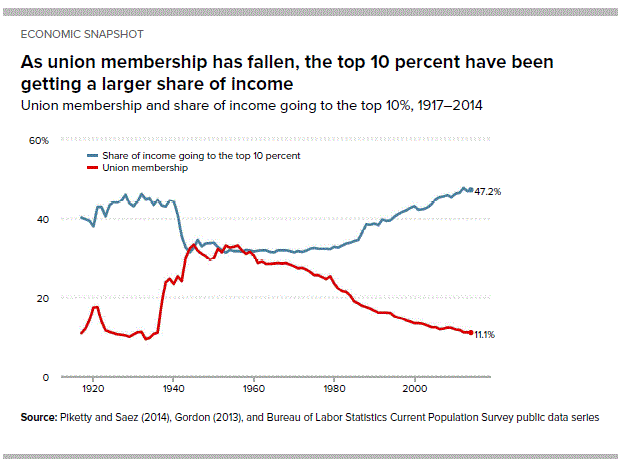As union membership has fallen, the top 10 percent have been getting a larger share of income
By Lawrence Mishel and Jessica Schieder
May 24, 2016 - Economic Policy Institute
As union membership has fallen over the last few decades, the share of income going to the top 10 percent has steadily increased. Union membership fell to 11.1 percent in 2014, where it remained in 2015 (not shown in the figure). The share of income going to the top 10 percent, meanwhile, hit 47.2 percent in 2014—only slightly lower than 47.8 percent in 2012, the highest it has been since 1917 (the earliest year data are available). When union membership was at its peak (33.4 percent in 1945) the share of income going to the top 10 percent was only 32.6 percent.
The single largest factor suppressing wage growth for working people and suppressing union membership over the last few decades has been the erosion of collective bargaining. This erosion has affected both union and nonunion workers alike, contributing to wage stagnation and growth in inequality. To boost wages for working people, policymakers need to intentionally tilt power back to working people by strengthening their rights to stand together and negotiate collectively for better wages and benefits, raising and improving labor standards, and achieving persistent low unemployment.
